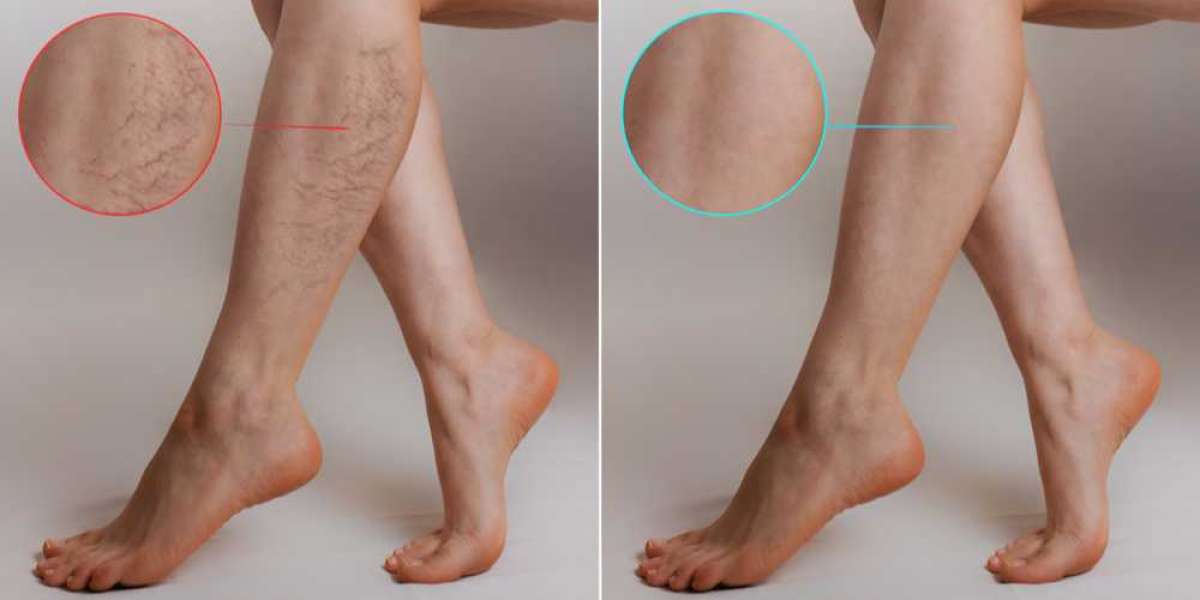Vein removal has become an increasingly sought-after procedure in the field of medical aesthetics. With advancements in technology and medical science, various treatment options have emerged to effectively manage and eliminate vein conditions, ranging from varicose veins to spider veins. Understanding the causes, symptoms, and treatment options for vein removal is crucial for individuals seeking to improve their vein health and overall well-being.
Introduction to Vein Removal
The human body's vascular system is complex and vital for the circulation of blood throughout the body. However, certain conditions can lead to the appearance of unsightly or uncomfortable veins, causing both cosmetic and health-related concerns. Vein removal procedures have gained prominence as a means to address these issues, providing relief and improved aesthetics for affected individuals.
Types of Vein Conditions
Two common types of vein conditions include varicose veins and spider veins. Varicose veins are enlarged and twisted veins that usually appear on the legs and can cause pain and discomfort. Spider veins, on the other hand, are smaller, red, purple, and blue vessels that twist and turn and are visible through the skin. These conditions can often lead to self-consciousness and physical discomfort, prompting individuals to seek vein removal solutions.
Causes of Vein Conditions
Several factors contribute to the development of vein conditions. These may include genetic predispositions, prolonged standing or sitting, obesity, hormonal changes, and pregnancy. Understanding these underlying causes is essential in developing effective strategies for both preventing and managing vein conditions.
Symptoms of Vein Conditions
Individuals with vein conditions may experience various symptoms such as aching, throbbing, or a feeling of heaviness in the legs. Swelling, muscle cramping, and itching around the affected area can also be common indicators of vein issues. Recognizing these symptoms early on can help in seeking timely medical intervention and appropriate treatment options.
Risk Factors Associated with Vein Conditions
Certain risk factors increase the likelihood of developing vein conditions. These may include age, family history, obesity, pregnancy, and a sedentary lifestyle. Being aware of these risk factors can empower individuals to make informed lifestyle choices and take necessary precautions to reduce the likelihood of developing vein-related complications.
Importance of Vein Removal
Vein removal procedures not only address the cosmetic concerns associated with visible veins but also alleviate physical discomfort and reduce the risk of potential complications. Improving blood circulation and restoring the natural appearance of the skin can significantly enhance an individual's overall quality of life and confidence.
Popular Vein Removal Techniques
Various advanced techniques are available for vein removal, each catering to specific conditions and patient preferences. Sclerotherapy involves the injection of a solution directly into the affected veins, causing them to collapse and gradually fade away. Endovenous laser ablation utilizes laser energy to seal off problematic veins, redirecting blood flow to healthier vessels. Surgical ligation and stripping are surgical procedures that involve tying off and removing the damaged veins through small incisions.
Recovery Process After Vein Removal
Following vein removal procedures, patients are advised to adhere to specific recovery guidelines provided by their healthcare professionals. These may include wearing compression stockings, regular exercise, and avoiding prolonged periods of sitting or standing. Monitoring the healing process and attending follow-up appointments are vital for ensuring a smooth and successful recovery.
Tips for Preventing Vein Conditions
Incorporating simple lifestyle changes can significantly reduce the risk of developing vein conditions. Regular physical activity, maintaining a healthy weight, avoiding prolonged sitting or standing, and elevating the legs can all contribute to better vein health. Additionally, wearing compression stockings can aid in improving blood circulation, especially for individuals at higher risk of developing vein-related issues.
Lifestyle Changes for Managing Vein Health
Adopting a healthy lifestyle that includes a balanced diet and regular exercise can have a positive impact on vein health. Consuming foods rich in fiber, antioxidants, and flavonoids can promote healthy blood flow and strengthen the vascular system. Engaging in activities that encourage proper blood circulation, such as walking and swimming, can also help in managing vein health effectively.
Consultation and Preparing for Vein Removal
Before undergoing any vein removal procedure, it is essential to consult with a qualified healthcare professional. Discussing the available treatment options, potential risks, and expected outcomes can provide individuals with a clear understanding of the process and enable them to make informed decisions. Preparing for the procedure may involve certain pre-operative measures, which will be communicated by the healthcare provider.
Understanding the Cost of Vein Removal Procedures
The cost of vein removal procedures can vary depending on the type of treatment, the severity of the condition, and the geographical location of the healthcare facility. Factors such as additional consultations, follow-up appointments, and post-procedural care should also be considered when evaluating the overall cost. Patients are encouraged to discuss financial aspects with their healthcare provider beforehand to avoid any unexpected financial burdens.
Potential Risks and Complications
While vein removal procedures are generally considered safe, there are potential risks and complications associated with any medical intervention. These may include allergic reactions, bruising, infection, and, in rare cases, deep vein thrombosis. Understanding these potential risks and following post-operative care instructions diligently can minimize the likelihood of experiencing complications.
Effectiveness and Success Rate of Vein Removal
The effectiveness of vein removal procedures often depends on the type and severity of the condition, as well as the chosen treatment method. While some individuals may experience immediate results, others may require multiple sessions for optimal outcomes. Consulting with a qualified healthcare professional and following post-procedural recommendations can contribute to a higher success rate and long-term satisfaction.
The Future of Vein Removal Techniques
Advancements in medical technology continue to pave the way for innovative vein removal techniques with improved efficacy and reduced recovery times. Ongoing research and development in the field of vascular medicine aim to introduce minimally invasive procedures that offer enhanced precision and minimal scarring. With these advancements, the future of vein removal looks promising, providing individuals with safer and more efficient treatment options.
Conclusion
Vein removal procedures play a crucial role in addressing both the cosmetic and medical concerns associated with vein conditions. By understanding the underlying causes, symptoms, and available treatment options, individuals can make informed decisions and take proactive measures to improve their vein health and overall well-being. Consulting with experienced healthcare professionals, adhering to pre and post-operative guidelines, and adopting a healthy lifestyle can significantly






